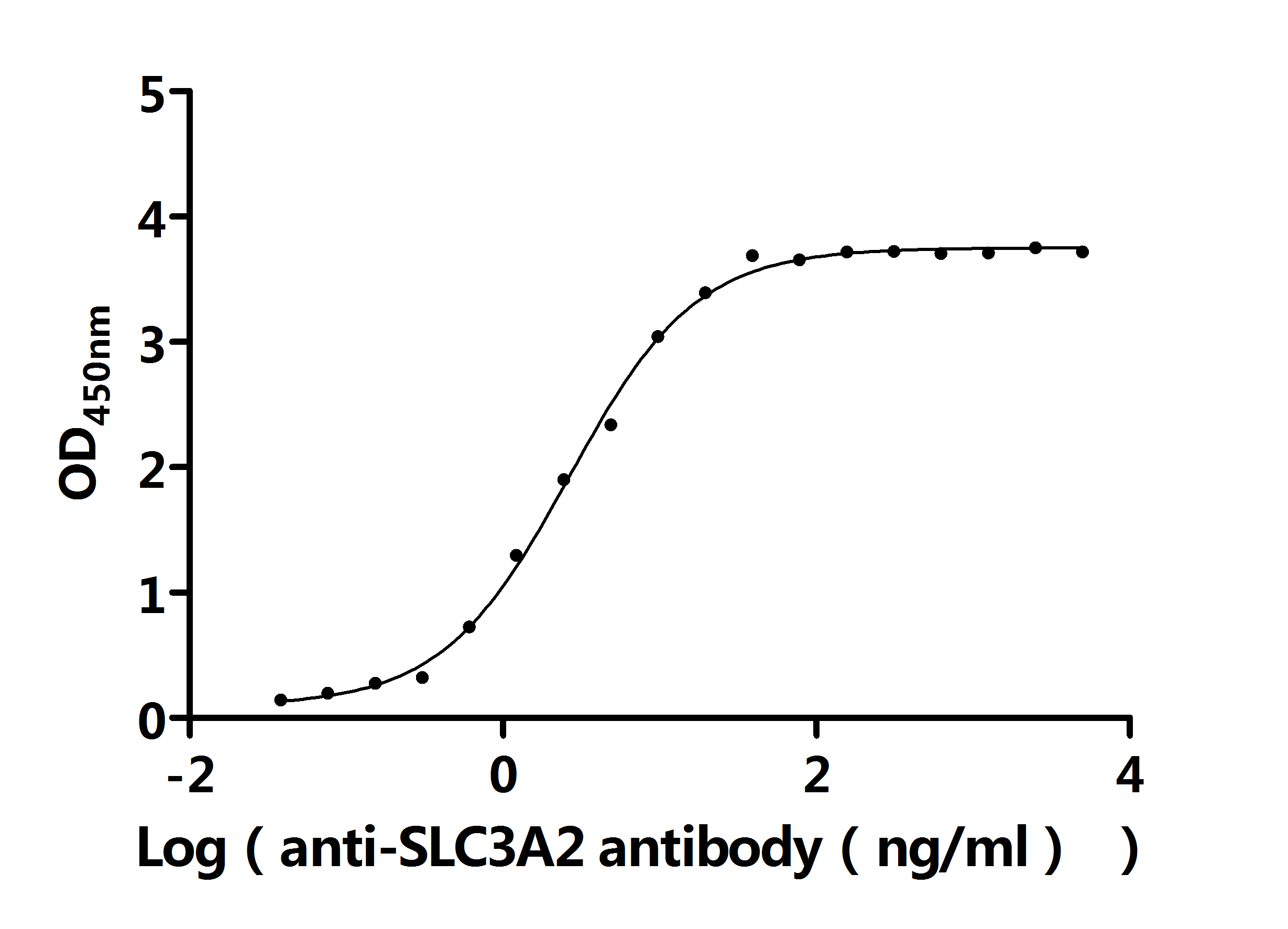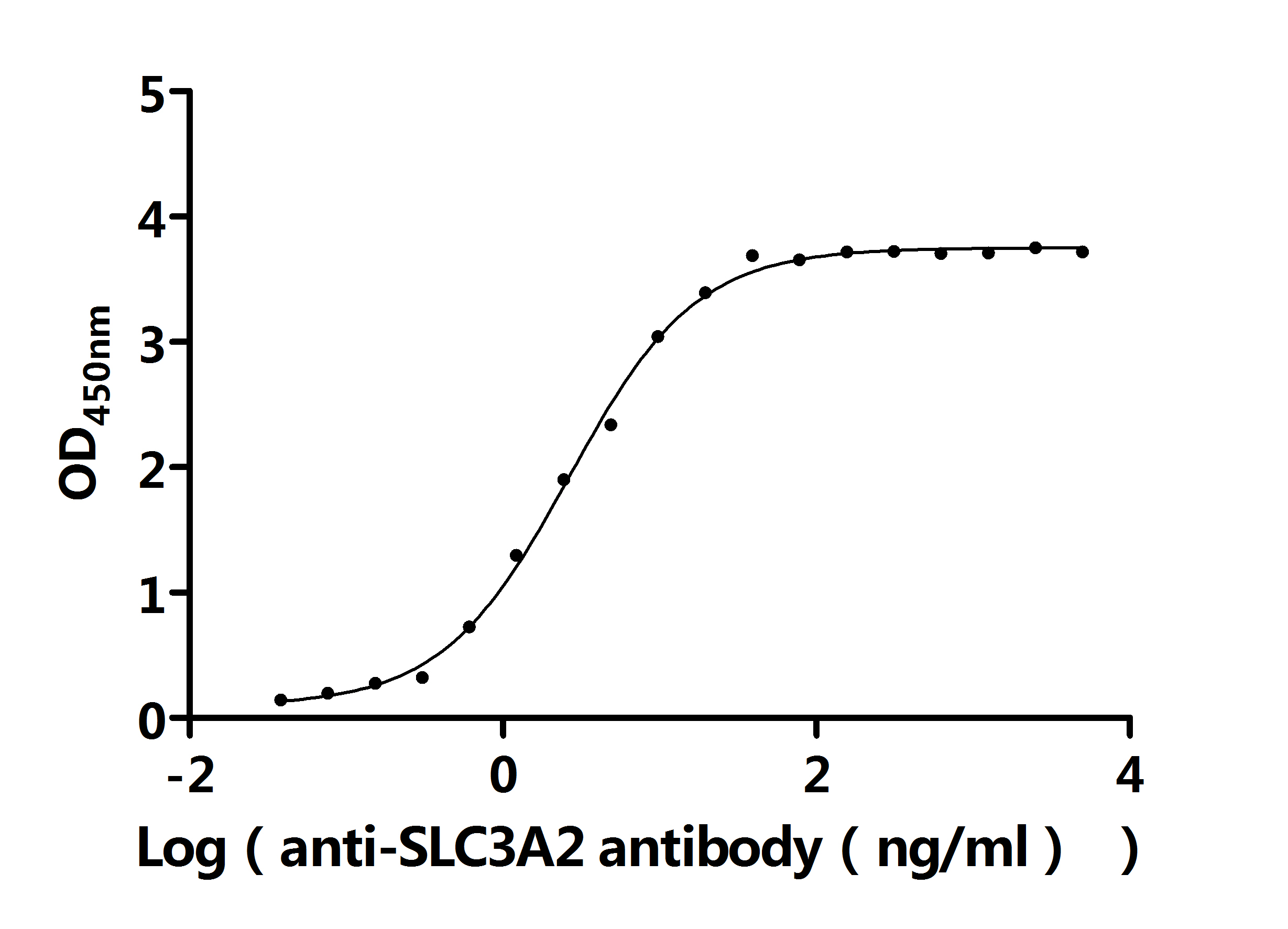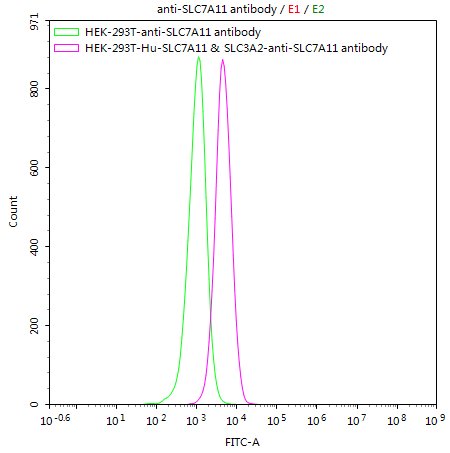[1] Sub-Nanometer Cryo-EM Density Map of the Human Heterodimeric Amino Acid Transporter 4F2hc-LAT2.
[2] Kahlhofer J, Teis D. The human LAT1–4F2hc (SLC7A5–SLC3A2) transporter complex: Physiological and pathophysiological implications[J]. Basic Clin Pharmacol Toxicol, 2023, 133(5):459-472.
[3] Digomann D, Linge A, Dubrovska A. SLC3A2/CD98hc, autophagy and tumor radioresistance: a link confirmed[J]. Autophagy, 2019, 15(10):1850-1851.
[4] Boado RJ, Li JY, Nagaya M, et al. Selective expression of the large neutral amino acid transporter at the blood–brain barrier[J]. Proc Natl Acad Sci USA, 1999, 96(21):12079-12084.
[5] Matsuo H, Tsukada S, Nakata T, et al. Expression of a system L neutral amino acid transporter at the blood–brain barrier[J]. Neuroreport, 2000, 11(16):3507-3511.
[6] Laudicella R, Albano D, Alongi P, et al. (18)F-Facbc in Prostate Cancer: A Systematic Review and Meta-Analysis[J]. Cancers, 2019, 11(1348).
[7] Nii T, Segawa H, Taketani Y, et al. Molecular events involved in up-regulating human Na+-independent neutral amino acid transporter LAT1 during T-cell activation[J]. Biochem J, 2001, 358(Pt 3):693-704.
[8] Zhao X, Sakamoto S, Maimaiti M, et al. Contribution of LAT1-4F2hc in Urological Cancers via Toll-like Receptor and Other Vital Pathways[J]. Cancers, 2022, 14(1):229.
[9] Ma H, Chen X, Mo S, et al. Targeting N-glycosylation of 4F2hc mediated by glycosyltransferase B3GNT3 sensitizes ferroptosis of pancreatic ductal adenocarcinoma[J]. Cell Death Differ, 2023, 30(1988-2004).
[10] Helgudóttir S-S, Johnsen K-B, Routhe L-G, et al. Upregulation of Transferrin Receptor 1 (TfR1) but Not Glucose Transporter 1 (GLUT1) or CD98hc at the Blood–Brain Barrier in Response to Valproic Acid[J]. Cells, 2024, 13(14):1181.
[11] Sugiura M, Sato H, Okabe A, et al. Identification of AR-V7 downstream genes commonly targeted by AR/AR-V7 and specifically targeted by AR-V7 in castration resistant prostate cancer[J]. Transl Oncol, 2021, 14(10):100915.
[12] Torrents D, Estévez R, Pineda M, et al. Identification and characterization of a membrane protein (y+L amino acid transporter-1) that associates with 4F2hc to encode the amino acid transport activity y+L[J]. J Biol Chem, 1998, 273(49):32437-32445.
[13] Lee Y, Wiriyasermkul P, Jin C, et al. Cryo-EM structure of the human L-type amino acid transporter 1 in complex with glycoprotein CD98hc[J]. Nat Struct Mol Biol, 2019, 26(6):510-517.
[14] Deuschle F-C, Schiefner A, Brandt C, et al. Design of a surrogate Anticalin protein directed against CD98hc for preclinical studies in mice[J]. Protein Sci, 2020, 29(1774-1783).
[15] Brown EJ, Albers MW, Shin TB, et al. A mammalian protein targeted by G1-arresting rapamycin-receptor complex[J]. Nature, 1994, 369(6483):756-758.
[16] Saxton RA, Knockenhauer KE, Wolfson RL, et al. Structural basis for leucine sensing by the Sestrin2-mTORC1 pathway[J]. Science, 2016, 351(6268):53-58.
[17] Han JM, Jeong SJ, Park MC, et al. Leucyl-tRNA synthetase is an intracellular leucine sensor for the mTORC1-signaling pathway[J]. Cell, 2012, 149(2):410-424.
[18] Park Y, Reyna-Neyra A, Philippe L, et al. mTORC1 balances cellular amino acid supply with demand for protein synthesis through post-transcriptional control of ATF4[J]. Cell Rep, 2017, 19(6):1083-1090.
[19] Cordova RA, Misra J, Amin PH, et al. GCN2 eIF2 kinase promotes prostate cancer by maintaining amino acid homeostasis[J]. Elife, 2022, 11:e81083.
[20] Poettler M, Unseld M, Braemswig K, et al. CD98hc (SLC3A2) drives integrin-dependent renal cancer cell behavior[J]. Mol Cancer, 2013, 12(1):169.
[21] Betsunoh H, Fukuda T, Anzai N, et al. Increased expression of system large amino acid transporter (LAT)-1 mRNA is associated with invasive potential and unfavorable prognosis of human clear cell renal cell carcinoma[J]. BMC Cancer, 2013, 13(509).
[22]Tarlungeanu DC, Deliu E, Dotter CP, et al. Impaired amino acid transport at the blood brain barrier is a cause of autism spectrum disorder[J]. Cell, 2016, 167(6):1481-1494.
[23] Errasti-Murugarren E, Palacín M. Heteromeric amino acid transporters in brain: from physiology to pathology[J]. Neurochem Res, 2022, 47(1):23-36.
[24] Beckers M, Bloem BR, Verbeek MM. Mechanisms of peripheral levodopa resistance in Parkinson’s disease[J]. NPJ Parkinsons Dis, 2022, 8(1):56.
[25] Yamamoto Y, Sawa R, Wake I, et al. Glucose-mediated inactivation of AMP-activated protein kinase reduces the levels of L-type amino acid transporter 1 mRNA in C2C12 cells[J]. Nutr Res, 2017, 47(13-20).
[26] Kobayashi N, Okazaki S, Sampetrean O, et al. CD44 variant inhibits insulin secretion in pancreatic β cells by attenuating LAT1-mediated amino acid uptake[J]. Sci Rep, 2018, 8(1):2785.
[27] Hayashi K, Kaminuma O, Nishimura T, et al. LAT1-specific inhibitor is effective against T cell-mediated allergic skin inflammation[J]. Allergy, 2020, 75(2):463-467.
[28] Torigoe M, Maeshima K, Ozaki T, et al. L-leucine influx through Slc7a5 regulates inflammatory responses of human B cells via mammalian target of rapamycin complex 1 signaling[J]. Mod Rheumatol, 2019, 29(5):885-891.










Comments
Leave a Comment